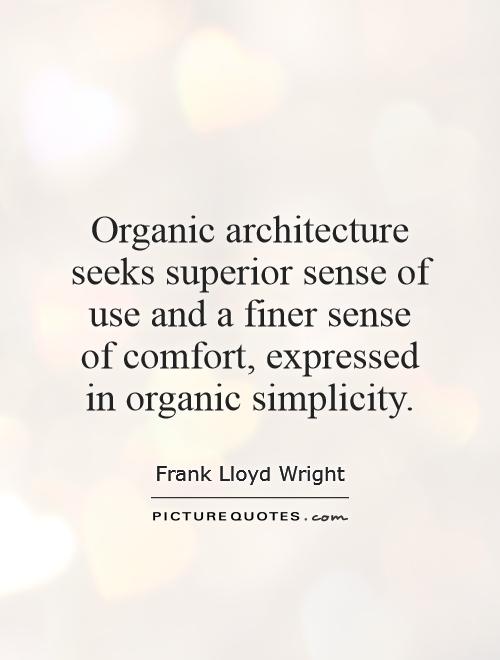Organic architecture seeks superior sense of use and a finer sense of comfort, expressed in organic simplicity

Organic architecture seeks superior sense of use and a finer sense of comfort, expressed in organic simplicity
Frank Lloyd Wright, one of the most renowned architects of the 20th century, was a pioneer of organic architecture. He believed that buildings should be in harmony with their environment, blending seamlessly into the natural landscape. Wright's philosophy was rooted in the idea that architecture should be a reflection of the natural world, with a focus on simplicity, functionality, and comfort.Organic architecture, as defined by Wright, seeks a superior sense of use and a finer sense of comfort, expressed in organic simplicity. This means that buildings should not only be aesthetically pleasing, but also practical and comfortable for those who inhabit them. Wright believed that architecture should enhance the lives of its occupants, providing a sense of peace and tranquility.
One of the key principles of organic architecture is the use of natural materials, such as wood, stone, and glass. Wright believed that these materials were not only more sustainable and environmentally friendly, but also more aesthetically pleasing and conducive to creating a sense of harmony with nature. By incorporating these materials into his designs, Wright was able to create buildings that felt like a natural extension of the landscape.
Another important aspect of organic architecture is the use of open floor plans and flowing spaces. Wright believed that buildings should be designed to accommodate the needs of their occupants, with spaces that flow seamlessly from one to the next. This creates a sense of openness and connection, allowing for a more fluid and organic living experience.












 Friendship Quotes
Friendship Quotes Love Quotes
Love Quotes Life Quotes
Life Quotes Funny Quotes
Funny Quotes Motivational Quotes
Motivational Quotes Inspirational Quotes
Inspirational Quotes